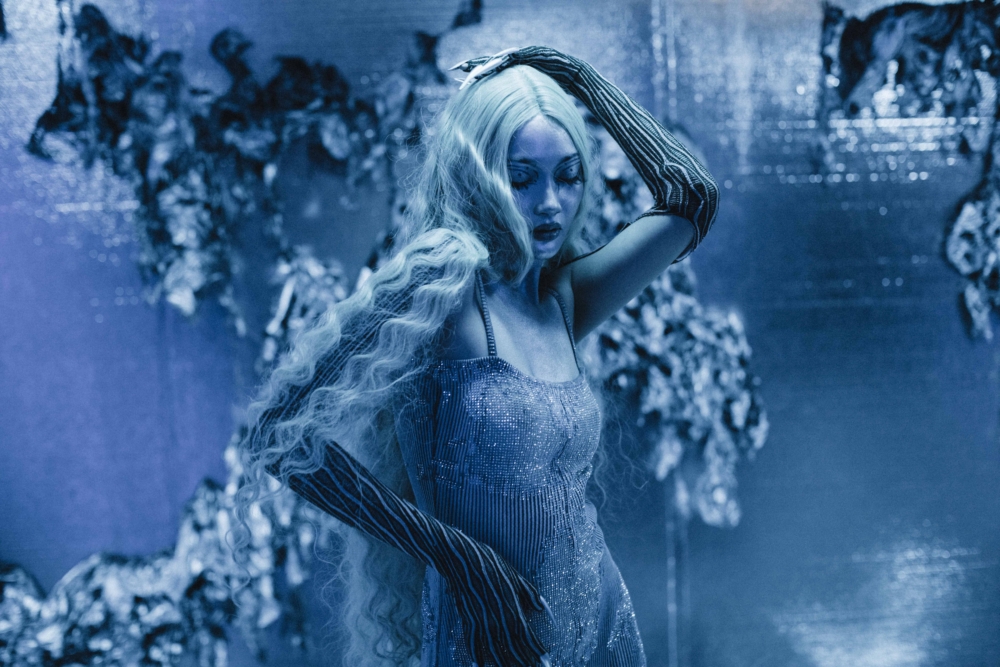In Promethean, Avleen Kaur and Baljit Singh invite us into a hypnotic world that questions the very essence of existence, tracing the lineage of life back to an otherworldly beginning. The film draws inspiration from the panspermia theory—the idea that life may have originated from celestial bodies beyond our reach, bringing with it echoes of diaspora, isolation, and mystery. Here, the cosmos becomes a canvas for an intimate exploration of origins, rendering the primordial as both vast and personal. Promethean is not merely a film but a kind of visual exegesis, one that holds up a mirror to humanity’s deep-seated need to understand itself while embracing the unknown.
A stirring symbiosis of science and art, the film unspools like a lucid dream, marrying meticulous design with profound philosophical inquiry. Every detail, from the surreal chrome landscapes to the haunting stillness of each frame, reverberates with themes of creation and femininity, reframing the genesis of life as both a cosmic accident and a sacred rite. Kaur and Singh bring a distinctive approach to these existential mysteries, examining what it means to be part of a lineage, a place, a history. Yet, rather than offering answers, they cultivate a reflective ambiguity, inviting the viewer to become a co-creator of meaning, to linger in the questions that cannot be answered, only felt.
In their conversation with Liminul, Kaur and Baljit unravel the intricate philosophies that undergird Promethean, discussing their scientific fascinations, the potent allure of untouchable worlds, and the way femininity serves as both vessel and catalyst in the narrative’s quiet but unyielding power. Their dialogue illuminates not only the craft of filmmaking but the meditative and deeply human quest for understanding that beats at the heart of their creation.
What led each of you to pursue a career in film and creative directing? Were there any defining projects or experiences that made you realize this was the path you wanted to follow?
A- I come from a very different background. Up until five years ago, I was an Engineer, and being unable to engage in R&D or create anything—ate at me every day. Art became my outlet, and eventually, it catapulted me into a new career. The desire for creation has always existed within me, whether I was in India, London, or now in Paris. So when I made my first film, I had so much control over lighting, color, dialogue, and positioning—it felt like a playground where I could truly exist. Everything I do is visual, and that’s where I thrive. My Ikigai is visual arts – I exist to make things look a certain way.
B- My journey into creative work began with photography, which was my way of telling stories visually. Over time, I realized I wanted to explore deeper narratives, which naturally led me into film. Working on projects about identity and loss felt like the right path, as those themes reflect my own experiences growing up.

Who or what are some of your biggest influences in art, fashion, and film? Are there specific artists, directors, or movements that have shaped your style and approach?
A- Everything inspires me- I’m constantly taking pictures of things, reading books about art, visiting museums- watching at least three films a week.
As for artists, Francis Bacon resonates with me deeply. There’s a certain sorrow in his work that pulls me in, even though I’m not a sad person at all. I’m fascinated by the exploration of somber themes and people; perhaps it’s my complex desire to bring happiness to others. I like observing people and things with a melancholic undertone and then creating pockets of happiness or lightness within them.
B- I draw inspiration from a mix of sources—photographers like Sally Mann, Gauri Gill, Tyler Mitchell, and movements like minimalism. My style is shaped by a blend of nostalgia, surrealism, and simplicity, with a focus on mood and emotion.
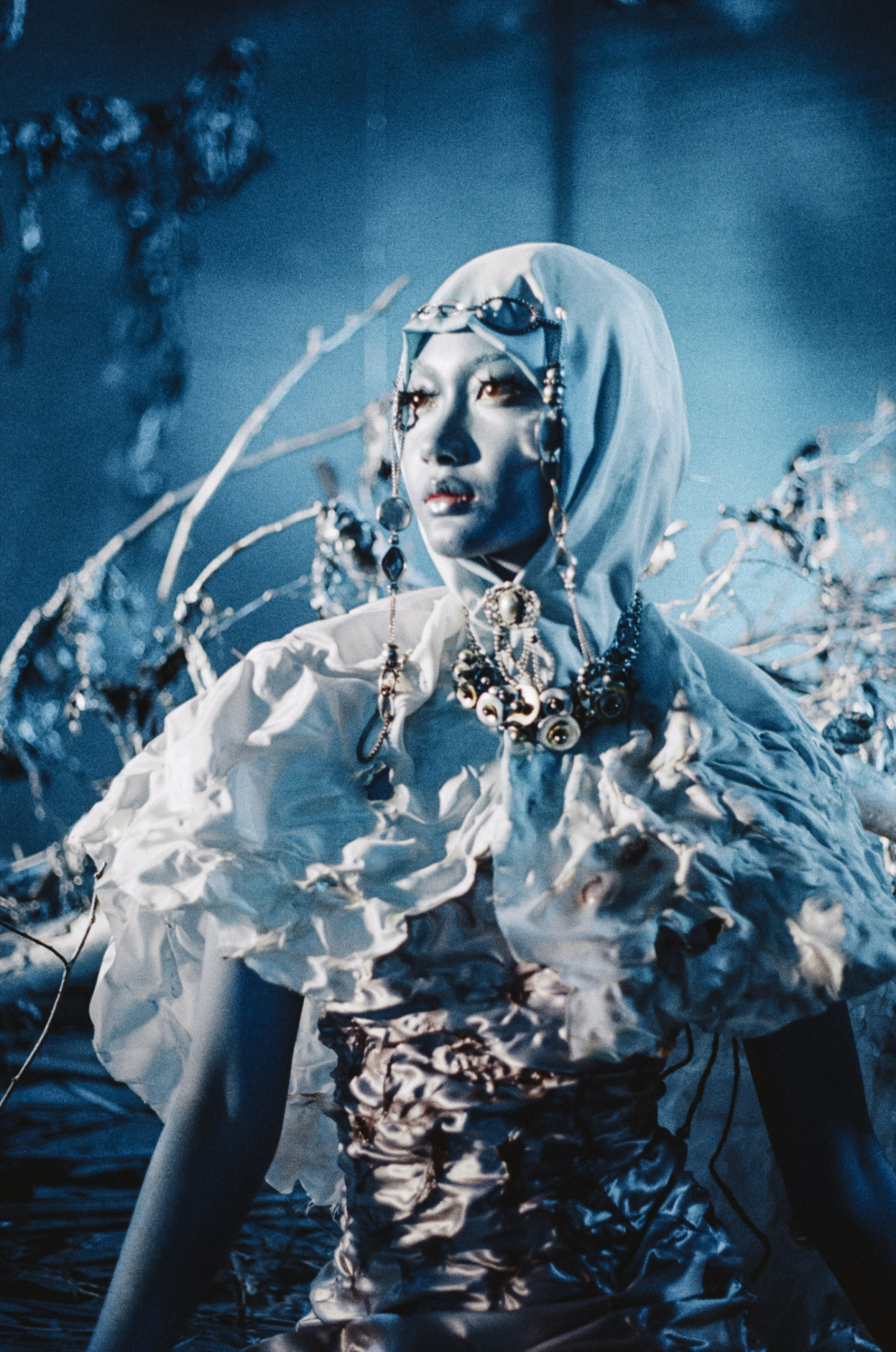
What have been some of the biggest challenges you’ve faced in your journey as creative directors and artists? How have these experiences shaped your approach to art and collaboration?
A-I have to agree with Baljit; it is definitely challenging being a woman. Sometimes I feel that not only do you get snubbed in the places where you work—but you also don’t sit in the same rooms, where decisions are made about who gets to be on the team, especially when it comes to leadership roles. There’s a significant distance between the decision-makers and a woman.
I’ve been tokenized so many times. Once, a very respected curator in the city came to my studio and asked me to stop the series I was working on which was exploring ancient Dravidian festivals in Southern India, and focus on nude self portraits, which was one of the craziest things I had ever heard. Another asked me to point out what was Indian about my work, still confused about that one. Whether it’s driven by resentment, excitement, or inspiration, I try working with people who explore art in their own way, it helps me make a new Venn Diagram!
B-Navigating the creative field as a woman of color has been challenging. From navigating imposter syndrome to having to prove yourself in traditional spaces. There were moments of doubt, but those challenges made me more intentional in my work. Collaboration has become a vital part of my process—it reminds me that art is about connection, not just creation.
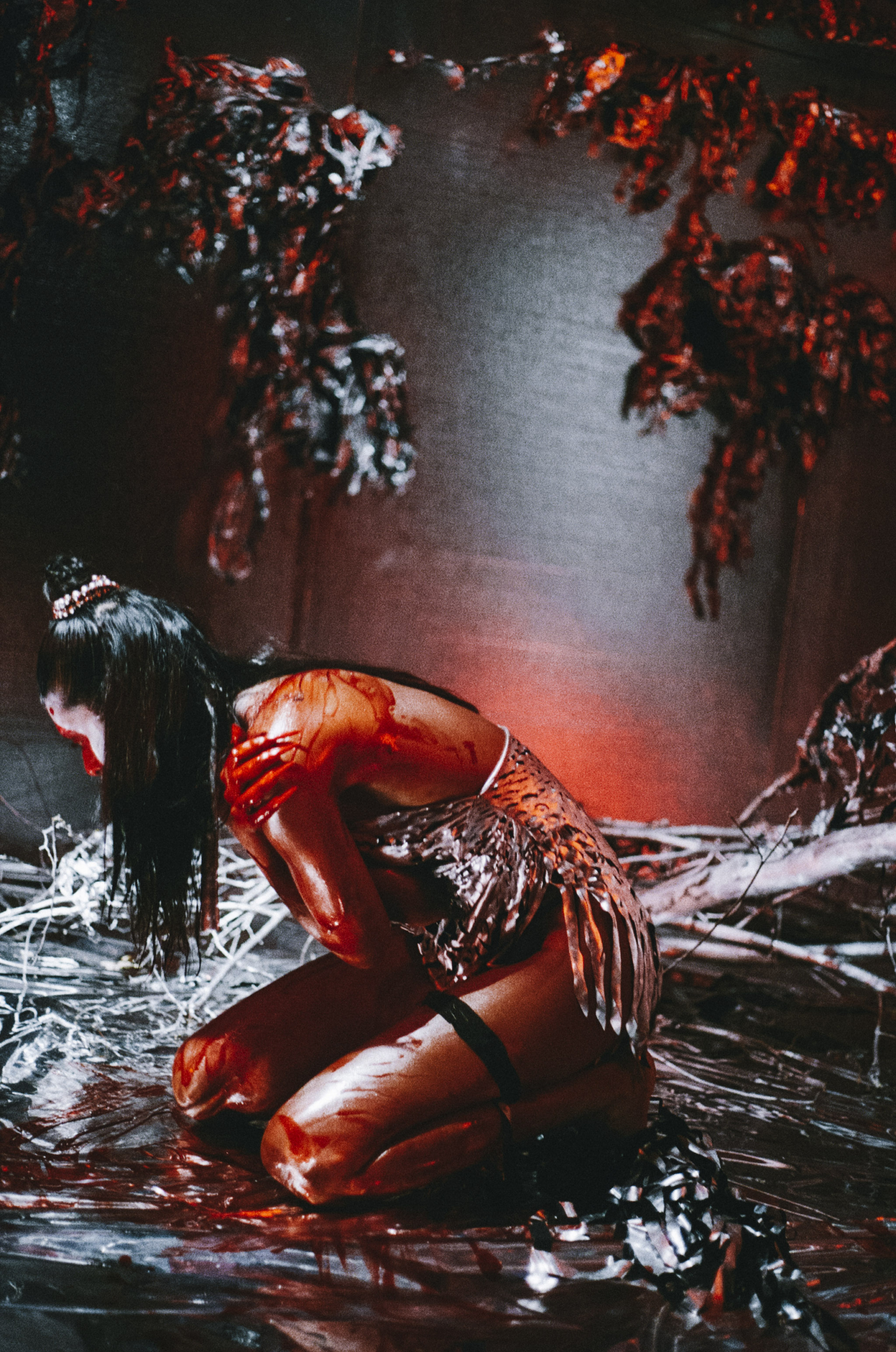
“Promethean” is inspired by the panspermia theory and the question, “How did we come to be?” What about this idea sparked your interest, and how did it shape the emotional and visual tone of the film?
A- My sister recently gave birth to a little nephew, a tiny being who transformed from a cluster of cells into a conscious person with his own personality, whims, and moods. We can describe the physical aspects of development to some extent, but I’m not sure we even truly understand consciousness well enough to explain it. When you try to reverse-engineer it, you realize how little we actually know.
Maybe the answers are limited by the boundaries of our own thoughts and ideas. If our thinking operates within certain parameters, it’s likely that some answers lie outside those boundaries. This question became a whirlpool of ideas and reflections for me, which I felt compelled to depict in my work.
B – As someone who grew up balancing immigrant roots with a desire to belong in so many spaces from school to work to the country where I was born into, the idea of origin—where we come from and what defines us—has always intrigued me. The panspermia theory felt like a poetic metaphor for diaspora and displacement, influencing the film’s emotional tone with the curiosity of what we may consider our idea of home and origin may be something further than we even know how to grasp.
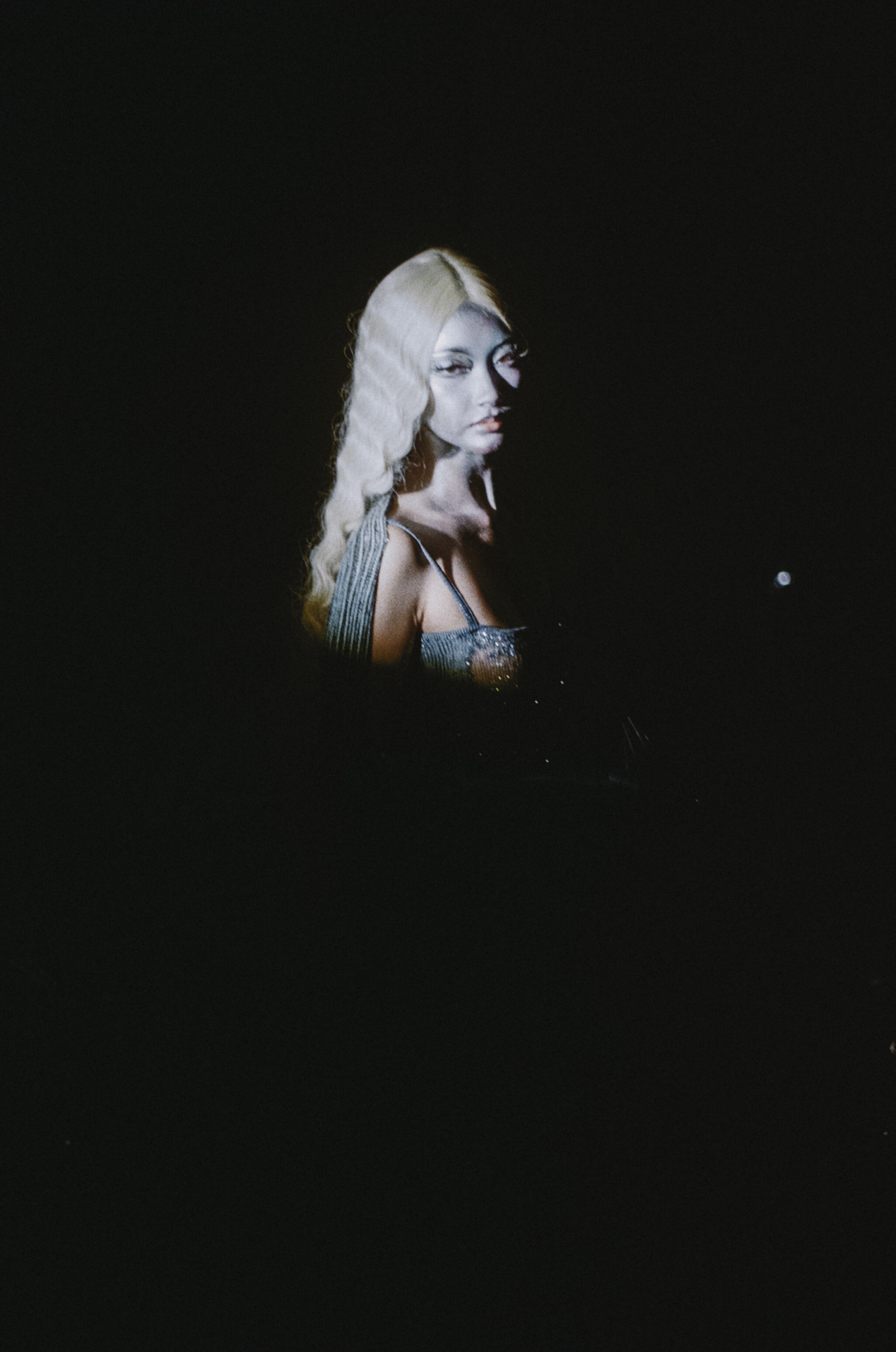
You’ve mentioned feeling awe at scientific discoveries like interstellar dust containing organic compounds. How does this sense of wonder translate into the film, and how do you hope it resonates with audiences?
A -In creating this piece, we focused on meticulous set design, lighting, and the interplay of various design elements in production. We paid close attention to textures, reflections, fabrics, and how the models’ movements interacted with their costumes. Working closely with the stylist, we wanted to ensure that every element in the film was intricate and translated well from our ideas to the final product.
Our goal was to construct a world within this space – If you saw the studio at the start—a bare-bones office—you’d be amazed at how, over 50 hours, Baljit and I transformed it into this reflective, chrome-like realm.
B- Discoveries like organic compounds in interstellar dust evoke a deep sense of wonder, much like photographing fleeting moments or human connections. I wanted that awe to come through visually in the film—slow, meditative shots—allowing audiences to feel immersed in the vastness and beauty of the unknown.
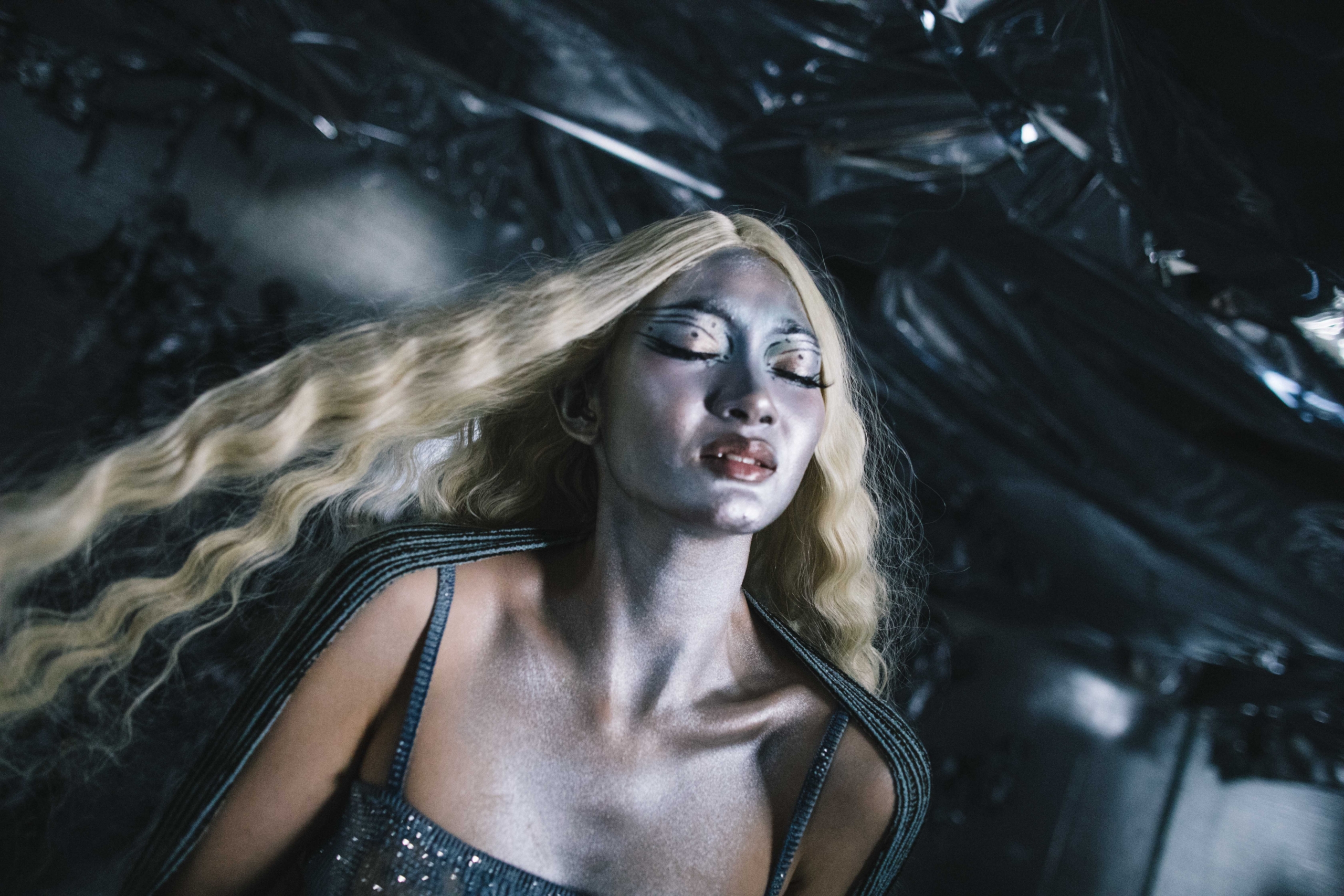
The film explores the survival of bacteria in space and the idea of life originating from extraterrestrial sources. How did you both balance scientific ideas with creative expression to create a narrative that feels both cosmic and deeply human?
A- The scientific theme we were exploring was so primal and mysterious that we felt compelled to translate it into something tangible. We set out to depict a foreign world, a foreigner, an alien , through every detail of the set, makeup, music, and choreo. Each detail was chosen to carry the audience further from anything recognizably human, pushing the visuals beyond what we know, into the strange and unknown.
Because there were no dialogues, we relied entirely on the visual . Every frame needed to feel like a glimpse into another realm, a place that felt both haunting and unfamiliar. The narrative simply insinuates, rather than tells, themes of birth, self-discovery, and the dawning of awareness among these three figures. We wanted to show this journey intimately, to sense something beyond the human experience.
B- Balancing science and art came naturally; the science grounds the narrative, but the human element—the emotions—gives it heart. Just as I do in my photography, the goal was to create imagery that feels cosmic but also deeply intimate and personal. The intention put into everything from the direction, styling, set design, and with the final video piece all of it was meant to bring some raw human emotion to the viewers despite the characters being not from this world.
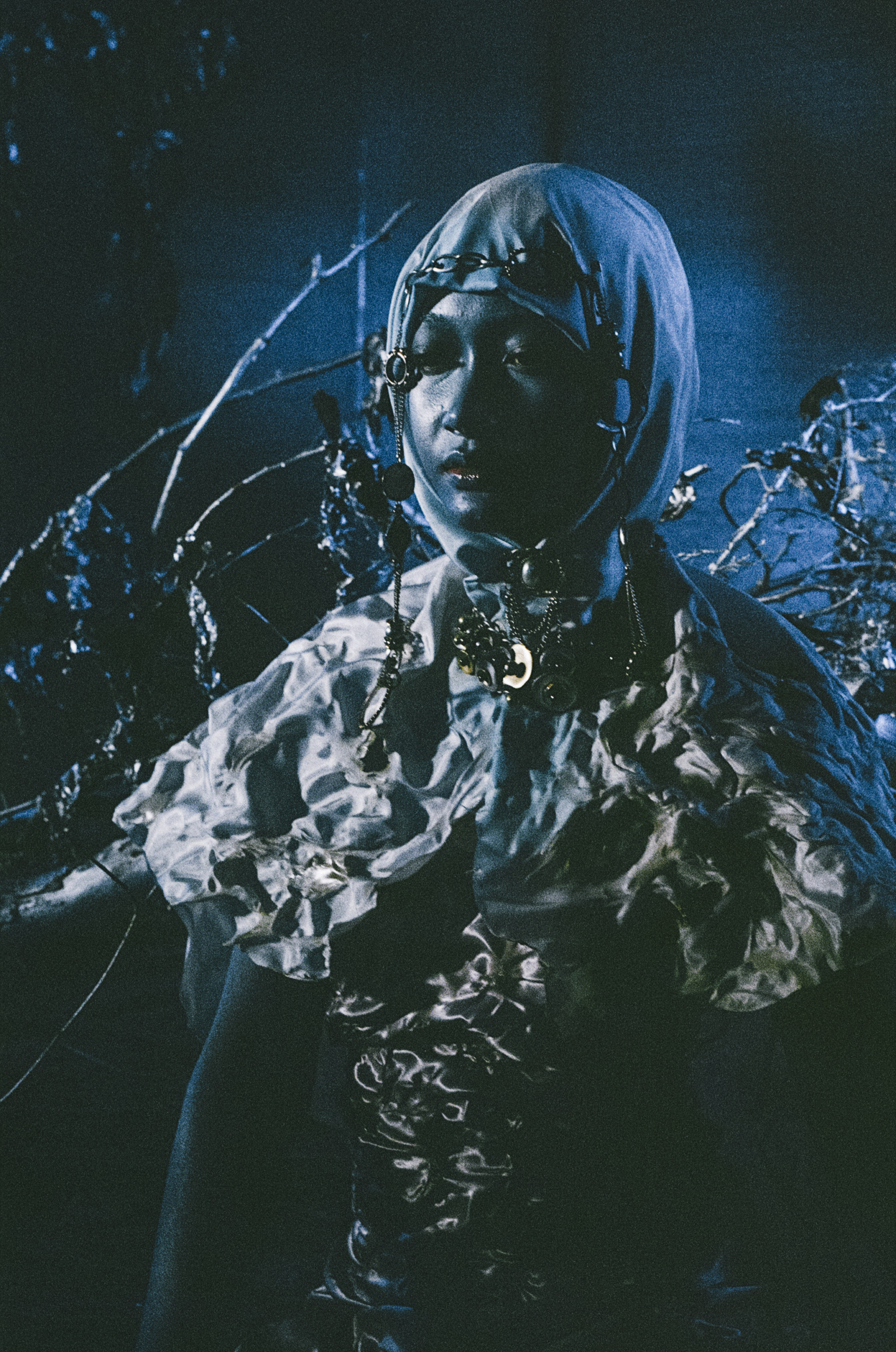
The post describes the world of Promethean as “untouchable” and surreal. What inspired this vision, and what artistic choices were key to bringing this unique environment to life?
A-Our goal was to create a world that felt entirely beyond Earth as we know it, a place that seemed to predate any human condition. That’s where the chrome elements came in—to evoke something timeless, even primordial. We initially hoped to collaborate with a renowned 3D artist to enhance this vision, but that opportunity fell through. Still, we worked through design and makeup.
One of our decisions was to blend makeup into human skin in certain areas, and obviously the third alien gives ‘birth’ in a human-like fashion- hinting at a point of convergence—a place where the alien form begins to intersect with the human. These subtle meeting points were intentional, a visual cue that these beings are evolving toward humanity, or perhaps that they’re connected to it in some fundamental way.
B-The concept of an “untouchable” world was inspired by my relationship with solitude—something familiar from my upbringing. We used soft, dreamlike palettes and textured visuals to evoke a surreal sense of isolation and transcendence, like a memory or a dream you can’t quite grasp.
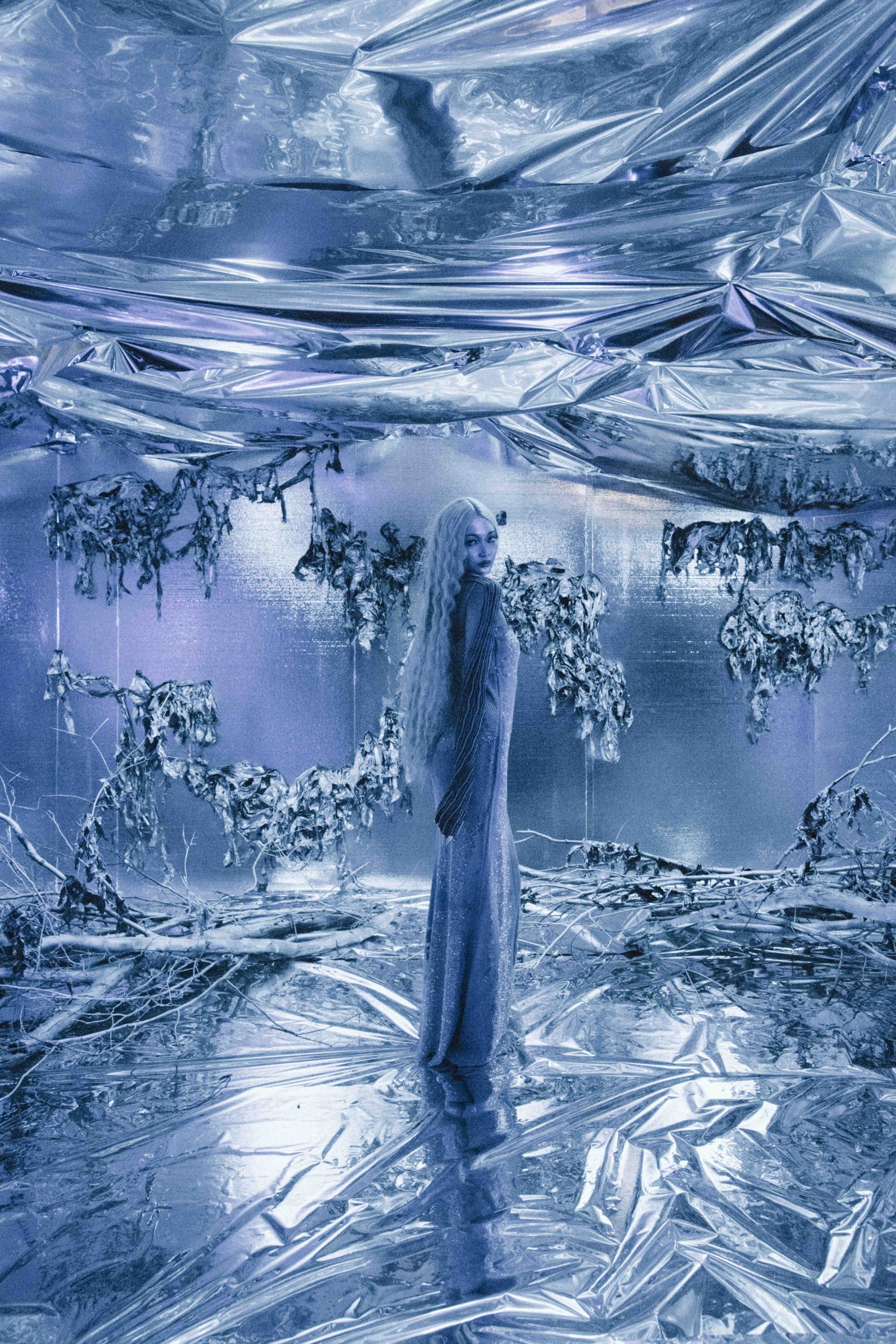
The choice to portray female figures as creators of humanity is a striking subversion of some traditional creation stories. How did this perspective influence your approach to character and symbolism, and why was it important to explore femininity as a force of creation?
A- I really wanted to reiterate the fact that birth comes through a woman—not only as an incubator for a physical being, but as an incubator for consciousness, emotions, and the early ideas that, over time, shape decisions that ripple outward, changing the world. It all begins inside a woman’s body, and that felt really important for me to point out, especially given the fact that we still struggle to see women recognized with the stature and respect they deserve.
In the film, we tried to show that these aliens, who are femme, give birth as a parallel to human women. Two of the alien figures are inspired by goddesses from different religions, symbolizing the connection between creation and reverence. We imagined these beings giving birth, and, over the centuries, becoming what we now see as gods and goddesses. This was our way of depicting them as beings who once brought life to humanity, transforming over time into figures of worship and myth.
B- I wanted to explore creation through a feminine lens because, growing up, the women in my life—like my grandmother and mother—embodied resilience and creativity. Portraying female figures as cosmic creators felt like reclaiming that power and questioning traditional stories of divinity that often overlook feminine strength.

The film doesn’t guide viewers explicitly, instead leaving space for personal interpretation. Why did you choose this approach, and how do you hope it resonates?
A- The theory itself isn’t proven or set in stone, so rather than claiming “this is what it is,” it felt more impactful to guide the audience, allowing them to interpret the story. There’s no single objective here, and it’s more immersive when the viewer is invited to reflect on what we’re suggesting. Ideally, this makes you want to look at the piece again and again, finding new layers with each experience. And we want you to – I mean, I think both of us make art so that you keep looking at it again and experiencing things again because that’s where intimacy is built.
There’s a particular scene with one of the models performing a dance, and it’s one of the most beautiful pieces I’ve ever seen—contained within a small 5’ x 5’ space, yet so moving. The lighting shifts with her, the tree in the background sways with the wind, and she moves through a range of expressions from laughter to screams. It’s a hauntingly beautiful moment, where you’re captivated without knowing precisely why.
This is the kind of space where the film exists: an invite to keep looking, to explore how it feels rather than what it’s supposed to mean. And it is a great success as an artist if you can make your audience feel that way , to find your own meaning in many ways.
B- Ambiguity is essential to the experience. Just as photography leaves room for interpretation, I wanted the audience to bring their own meanings to the film, engaging with it as a personal meditation on existence.
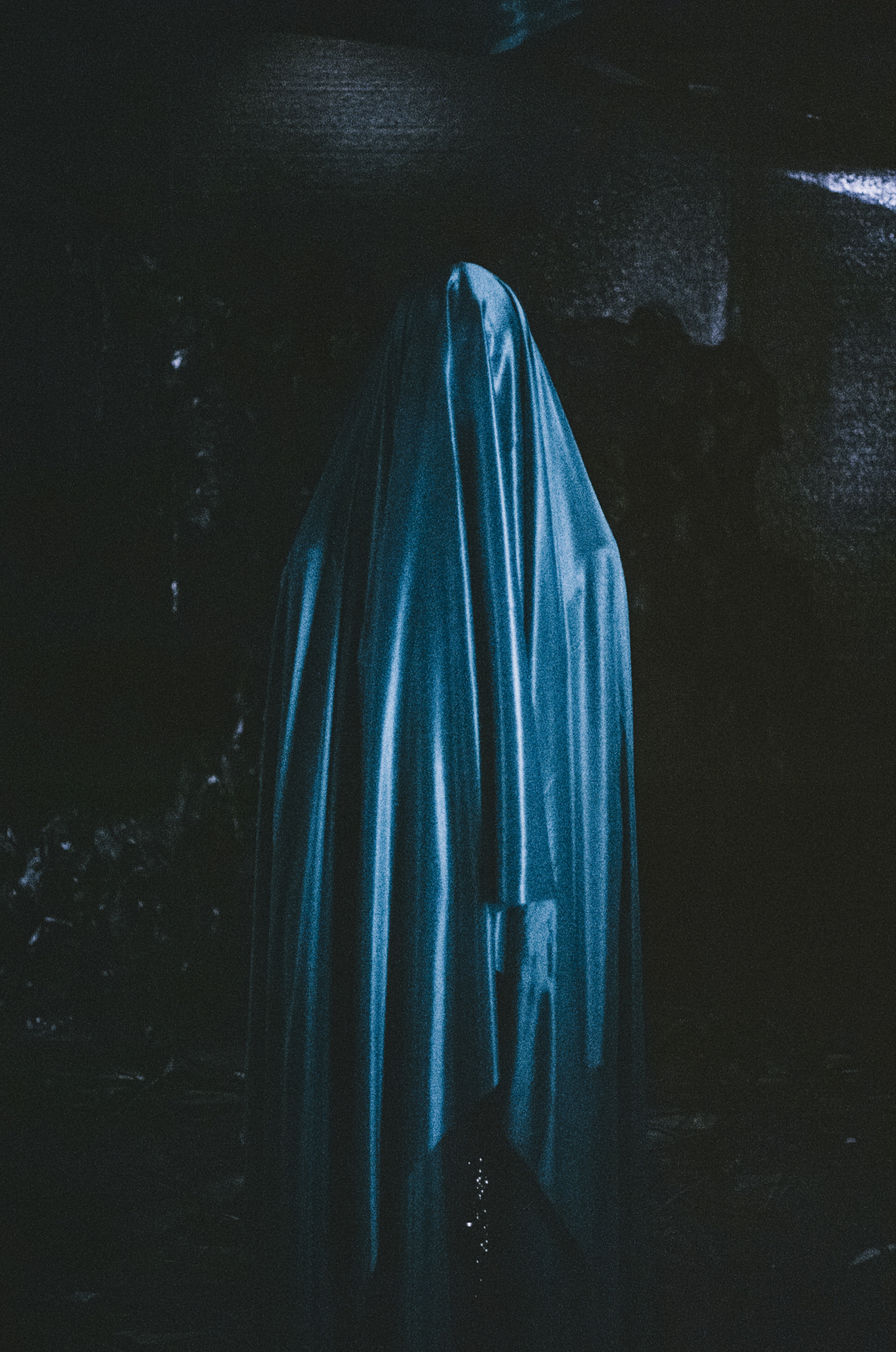
The film is both meditative/philosophical and yet very rooted in specifically contemporary aesthetics. What aesthetic signifiers, designers, films and artists were you inspired by in creating the aesthetic tonality of the film?
A- Oh my God, there are so many surreal Japanese films that I wanted to incorporate into my work! While they don’t strictly fall under horror or comedy, they definitely inspired my vision. 2001: A Space Odyssey and Ridley Scott’s Alien series have been particularly influential; I must have watched those films at least 600 times! In Prometheus 2012, in the opening sequence,a creature eats something and then disintegrates in a body of water. This scene profoundly impacted my film because it implies either death or harm to humanity—concepts I wanted to convey in my own narrative.
In addition to these inspirations, Kazuo Miyagawa, a brilliant Japanese cinematographer. There’s a scene in Rashomon that particularly resonates with me, where characters travel through the trees and forest. The way the light filters through the leaves creates movement on their faces, and I found that so intriguing and beautiful. I aimed to replicate that effect in my film as well.
B- We leaned into contemporary aesthetics—drawing inspiration from minimalist design, experimental films, and even fashion photography. Films by directors like Terrence Malick and visual artists like James Turrell influenced the look. Working with limited resources forced us to focus on texture and light, making every shot intentional.
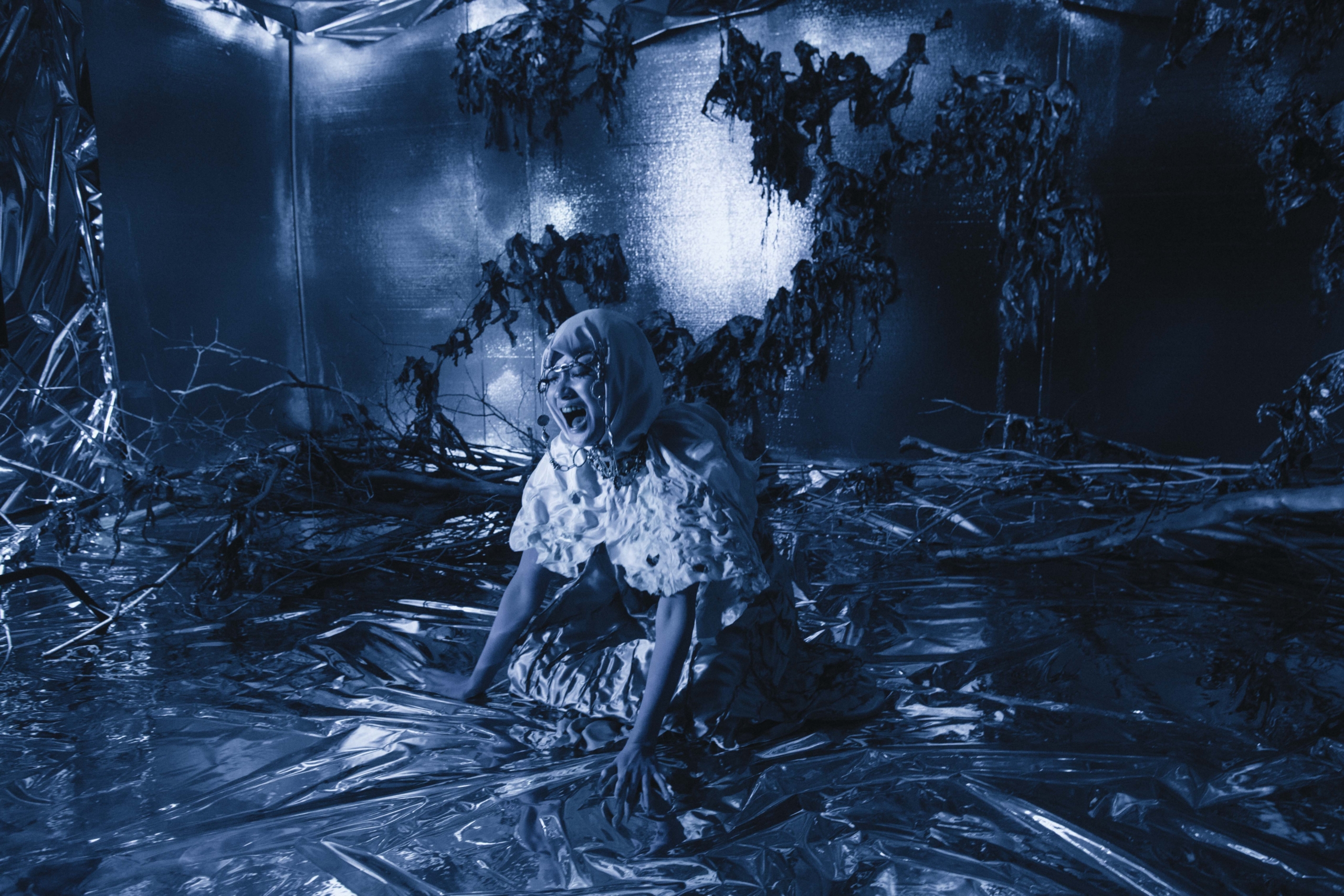
At its core, Promethean invites viewers to ponder their own origins and existence. What reflections or questions do you hope the audience will leave with after experiencing this film?
A- Oh, this is an interesting one! For me, a major point of contention is our inability to form thoughts about the truth, which can feel quite dire. As I said, not having the words, the dimensions, or the ability to comprehend what space and time are—makes it difficult to grasp something that is so much more than our ability to imagine. The film isn’t meant to depict the truth; it may represent something far removed from your idea of what the birth of humanity is like. However, it does create a path that starts from our origins and leaps into a new world we’ve created.
One of the major themes for me is definitely the role women have played in the world and how minuscule or undermined it is. Giving birth is seen as a significant part of life- I’ve witnessed the women around me become mothers, and I know it is an excruciating process. It’s beautiful, of course, and worthy of celebration, but it is also a physically demanding experience that takes so much from you. You give so much of yourself from the moment someone is conceptualised inside you. And the most important question – why are there no Femme Gods??
B- I hope viewers leave the film with more questions than answers. I want them to reflect on where they come from—whether it’s on a cosmic or personal level—and what those origins mean for their place in the world.
Cody Rooney is the Editor in Chief and senior contributor at liminul.
He is a PhD candidate, digital content specialist, writer, editor, multi-media artist, and photographer.

